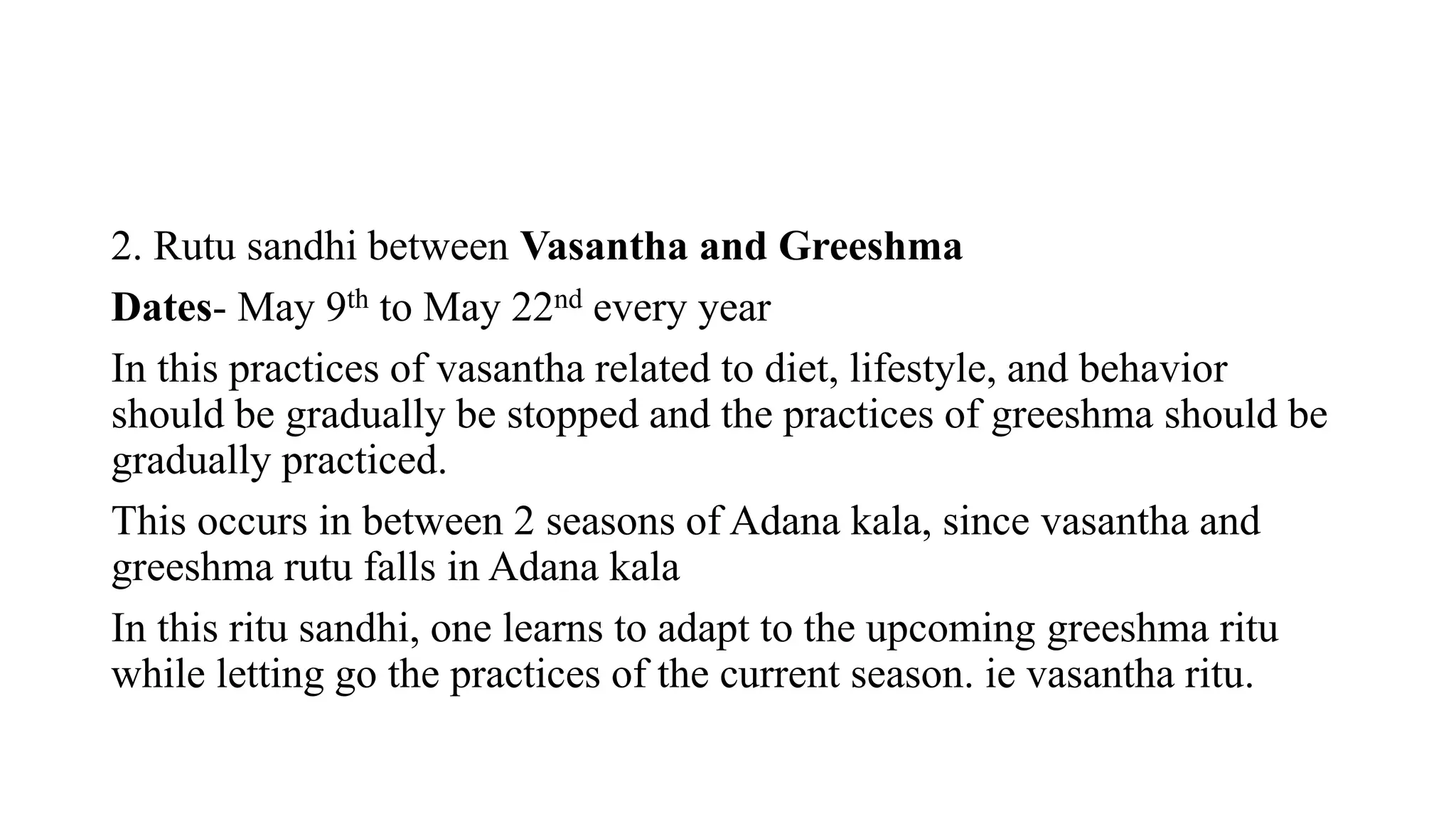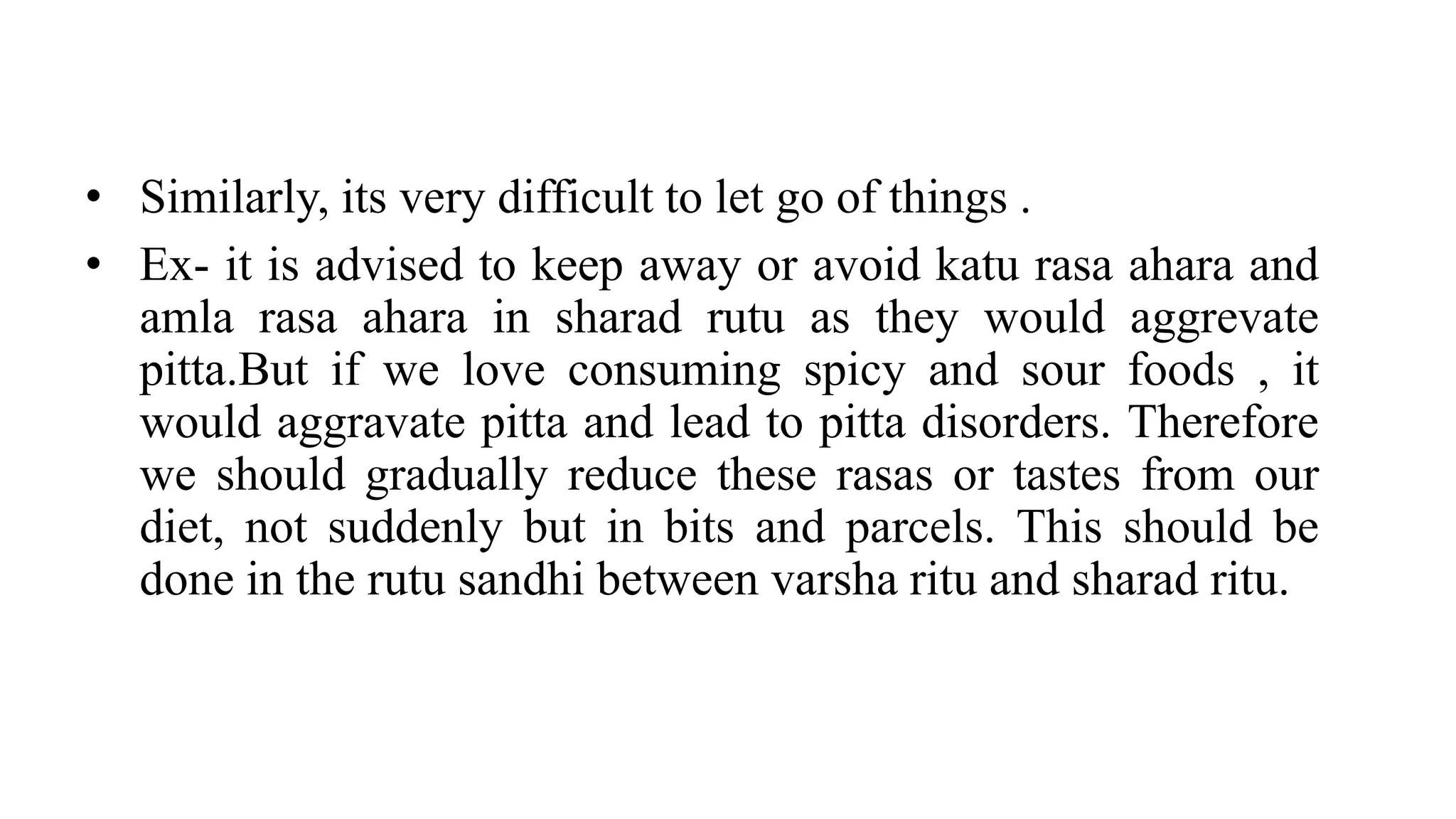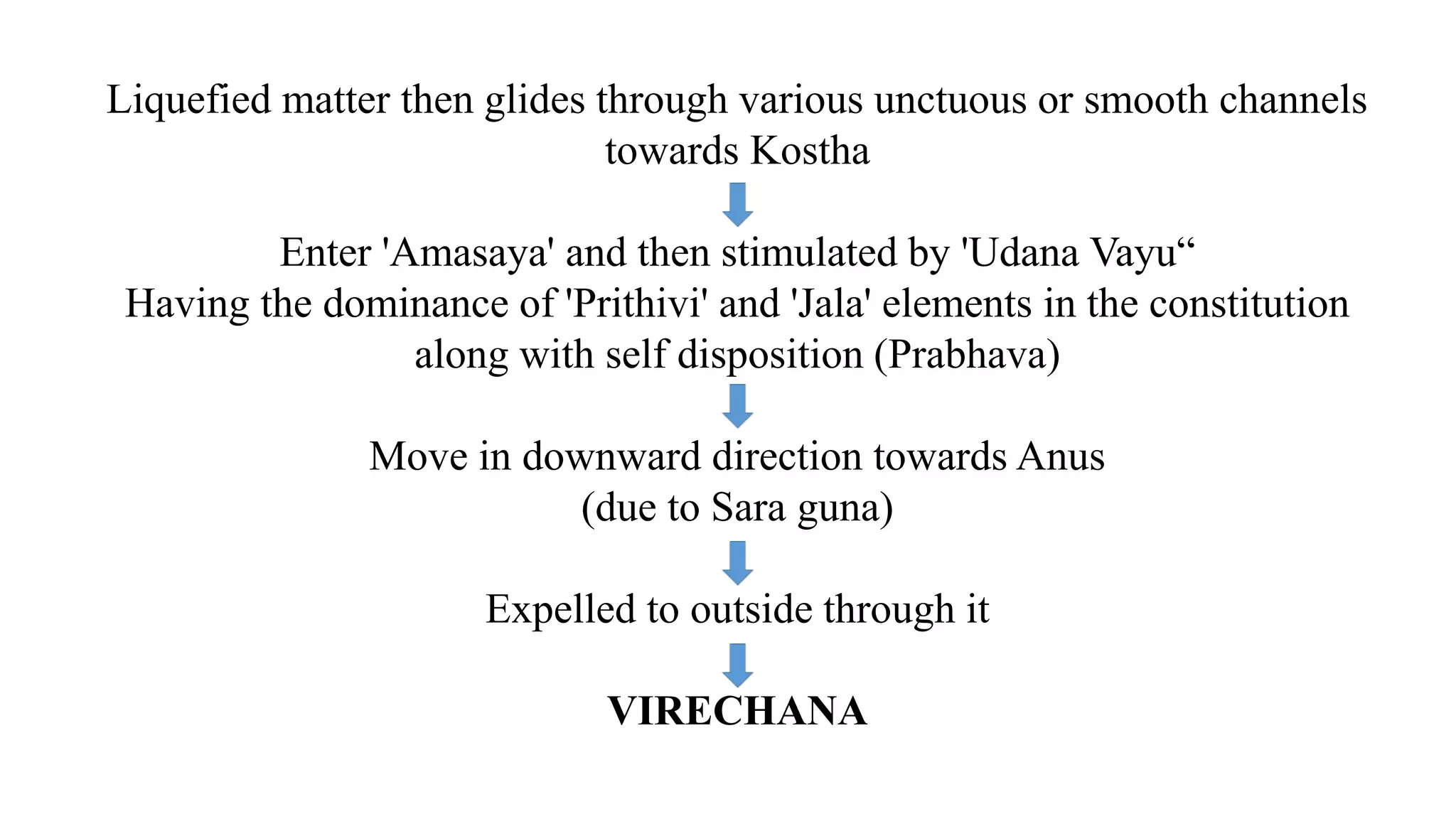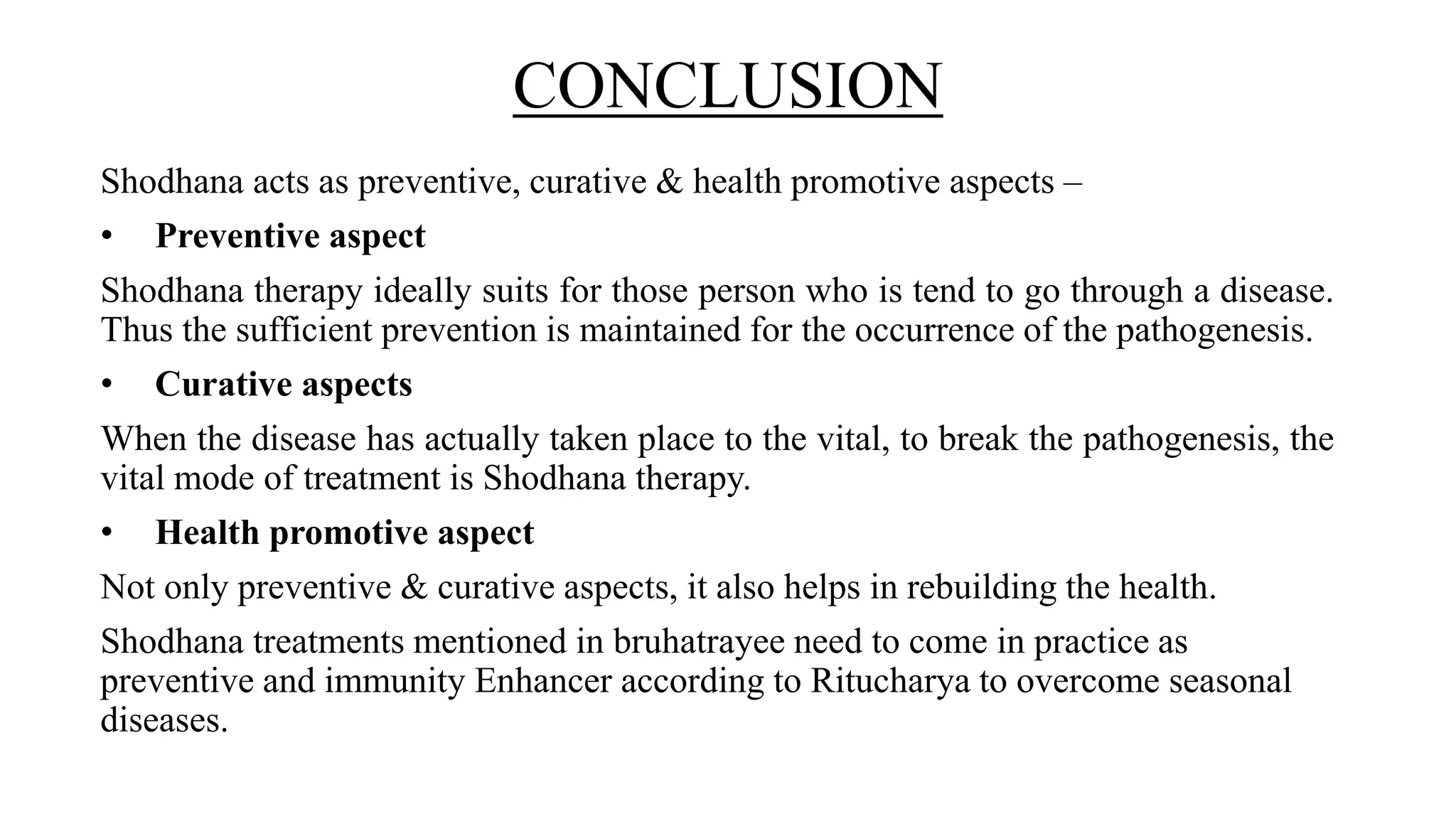This document provides an overview of ritu-sandhi (seasonal junctions) in Ayurveda. It defines ritu-sandhi as the 14-day period connecting the end of two seasons. It discusses the historical references to ritu-sandhi in Vedic texts and its importance in helping the body adapt smoothly between seasons. The document also outlines the different types of panchakarma cleansing treatments recommended during each ritu-sandhi period to pacify aggravated doshas and prevent seasonal diseases. Following the ritu-sandhi practices helps one gradually stop habits of the previous season while adopting those of the upcoming season for balanced health throughout the year.






















































































